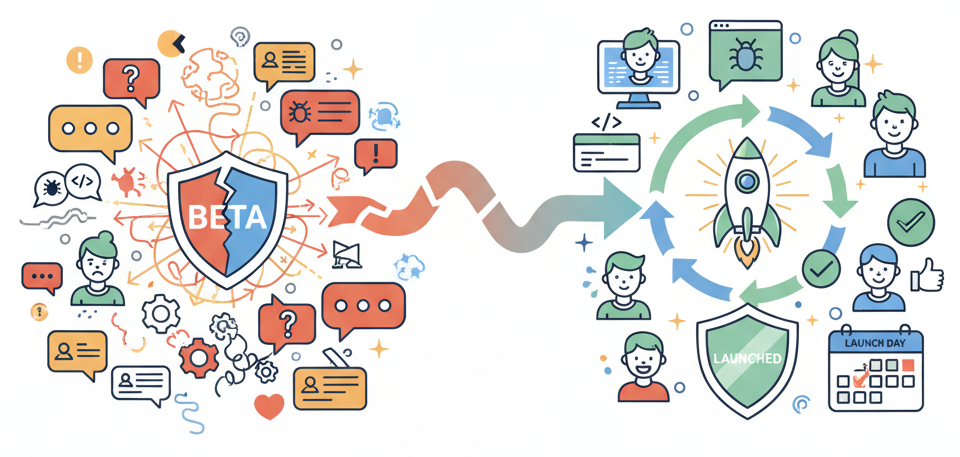Now Reading: Agile Affinity Mapping: Gaming Case Study
-
01
Agile Affinity Mapping: Gaming Case Study
Agile Affinity Mapping: Gaming Case Study
From Beta Feedback Chaos to a Smoother Launch Day
A small indie game studio sorted through thousands of pieces of player feedback from a closed beta to create a focused and achievable patch plan, ensuring a successful and positively-reviewed launch.

The Challenge
The studio’s new indie game had just finished a closed beta with 500 enthusiastic players, generating thousands of bug reports, suggestions, and general comments on their Discord server and feedback forms. The small, 4-person team was completely overwhelmed and needed a way to triage this massive influx of information to prioritize what was truly critical to fix before launch.
The Process: From Chaos to Clarity
Before the Planner: Gathering Raw Data
The community manager spent two full days exporting, cleaning, and de-duplicating data from Discord, a Google Form, and bug reports sent via email. They compiled a master spreadsheet with over 2,000 distinct items, tagging each as a “Bug,” “Suggestion,” or “General Comment.”
Step 1: Prepare for Affinity Mapping
The “Prepare” step goal was laser-focused on launch: “Categorize all beta feedback to create a prioritized backlog for our 1.0 launch patch.” The triage session would include the lead designer, lead programmer, and community manager, representing the vision, execution, and player-facing aspects of the game.
Step 2: Conduct the Mapping Session
The “Conduct” plan was to focus only on the “Bug” and “Suggestion” tags. Using a collaborative tool like Milanote, they would create cards for each item and start grouping them. For bugs, they would group by game system (e.g., “UI Bugs,” “Physics Bugs,” “Save/Load Issues”). For suggestions, they would group by feature (e.g., “Crafting Ideas,” “Character Customization,” “Quality of Life”).
Step 3: Analyze and Prioritize Groups
For ‘Analyze and Prioritize,’ the plan was multi-faceted to reflect game dev realities. For bugs, they would prioritize based on severity (e.g., game-crashing vs. a visual typo). For suggestions, they would use a simple ‘Yes / No / Maybe for a future update’ classification to quickly sort them based on alignment with their core game vision and available development resources.
Step 4: Implement and Monitor Actions
In the “Implement” step, all critical bugs and “Yes” suggestions would be converted into tickets in their issue tracker, GitHub Issues, and assigned for the final pre-launch sprint. The public launch patch notes would be the ultimate deliverable, and success would be measured by player reception on launch day and a reduction in bug reports for the known issues.
After the Planner: Running the Workshop
The generated report kept the triage session incredibly focused and prevented it from becoming a four-hour debate. The affinity map of bugs immediately revealed a major, unexpected problem with the inventory UI that was causing a cascade of other, smaller issues. The suggestion sorting was just as valuable, allowing them to quickly defer complex ideas like ‘add multiplayer’ while green-lighting simple, highly-requested ‘quality of life’ features like ‘add a crouch button.’ The final patch list was clear, focused, and, most importantly, achievable before their launch deadline.
The Results
The planner was instrumental in turning an overwhelming data dump into a clear, prioritized, and actionable development plan. It allowed the small team to work smart, focus their limited resources, and ensure a much smoother and more successful launch.
- Created a focused launch-day patch that addressed the 15 most critical, game-breaking bugs and 5 high-impact, low-effort player suggestions.
- The game launched with a ‘Very Positive’ rating on Steam, with many early reviews specifically praising the developers for listening to beta feedback.
- The clear plan reduced pre-launch stress and crunch time for the development team.
- Established a sustainable and efficient process for handling player feedback that they continue to use for post-launch updates.

